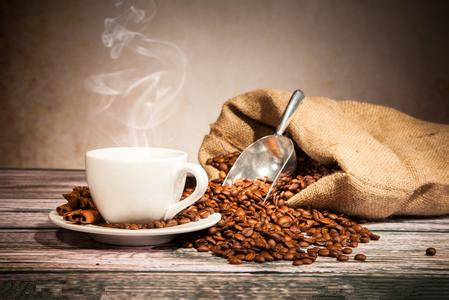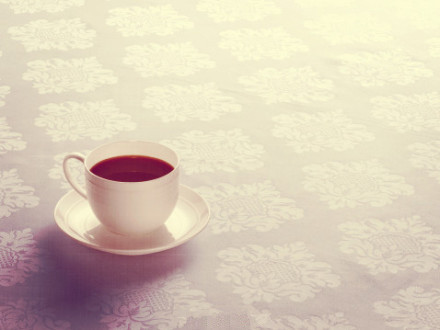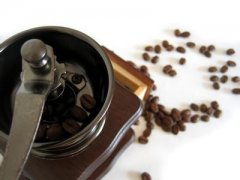Clean Italian coffee machine the second golden rule

As long as the coffee liquid touches the surface, the coffee oil will continue to stick to it. Because of its unstable chemical properties, the accumulated grease will soon become bitter. When freshly brewed coffee comes into contact with these old oils, it will smell rotten.
The bad news is that there is a widespread problem of dirty machines in American cafes.
The good news is that this problem is easy to solve, as long as you are diligent in cleaning and "cooking" again.
The chef of the restaurant will check the plate when he has nothing to do, and is always required to be clean. The same espresso bar should look at the filter handle and outlet head with the same mentality. But it can't be completely free of coffee grease, lest espresso come into direct contact with the exposed metal surface. Therefore, every time you clean the filter handle and use espresso special detergent to backwash, brew the coffee once and then pour it out.
This chapter focuses on the cleaning steps after closing every day, and other cleaning work that must be carried out on a regular basis. Chapter 17 of this book will show you how to operate the machine to keep it clean.
a. Filter handle-
When you usually make coffee, you have to wash it every hour. After closing every day, dissolve it in hot water with a spoonful of detergent. Separate the coffee filter from the handle and soak in it overnight. When soaking, do not soak the plastic part of the hand, so as not to be eroded by the detergent.) The next morning, scrub hard with Scotch Brite (for washing glass). Use a small bottle brush to reach into the small passage of the handle outlet and brush off the small pieces of debris that stick to it.
Form a good habit of cleaning every night so that coffee oil will not accumulate. Otherwise, if the grease slowly accumulates and forms a hard lump and sticks to the outlet, it will be very difficult to clean up.
If the filter handle is dirty, the appearance and taste of the espresso will change, the crema is less, and there will be white lines. (see Chapter 17 of this book-cleaning techniques)
b. Do backwash with espresso special detergent-
There is a gadget called "non-porous filter" (it looks like an ordinary filter, but there are no holes in it.) Remove the general filter from the handle and put it into the non-porous filter to block the water pressure of the pump and let the water flow back out of the head.
Modern boiler-type espresso machines have valves and drainage lines for releasing remaining high-pressure hot water. Otherwise, after you finish this cup, when you plan to cook the next cup and take off the handle of the filter, the high-pressure hot water will flush out and spray the brewed coffee powder everywhere. So after cooking a cup, there must be a pressure relief valve to release the pressure. This valve and associated piping, located behind the hot water dispersion screen of the outlet head, are collectively referred to as the "countercurrent system". When brewing water flows out, the effluent system, coffee and countercurrent system share a set of piping. This common pipeline will deposit coffee grease and give off a rancid smell after oxidation.
There is already a special detergent for espresso to dissolve and wash away the grease that has accumulated in the pipeline valves. The main ingredients of the detergent are:
Sodium phosphate
Foaming agent (for cushioning)
Other compounds (used to strengthen cleaning power to protect washers and other soft parts from sodium phosphate)
How often do you wash backwards?
Do it at least once every night at closing time. Use according to the instructions of the cleaner. (there will be different cleaning methods for different machines, depending on which machine you are, use the method specified by it)
We put a tablespoon of detergent in the porous filter, put it in the filter handle, lock the handle, start the pump for 30 seconds, and turn off the pump. Wait for the pressure to release, then start the pump. Repeat this twice at intervals of 3 to 4 seconds.
After cleaning, don't forget to rinse the water head before making coffee. Remove the porous filter and rinse it with hot water. Then briefly turn on / off the pump several times until the outlet head has been washed clean. Then put the clean perforated filter back on the handle and lock it. Start the pump for 5 seconds and turn off the pump. Repeat this five times. (to be clean, the countercurrent system should be flushed with clean water at least 5 times.)
Maybe you need to wash it with detergent a few more times during business hours. Drink your own coffee often in order to determine the appropriate cleaning interval. Our store is cleared every four business hours. (please see Chapter 17 of this book for details.)
c. Water diversion network-
Remove the water distribution network and clean it every night, then clean the fixing screw and outlet head.
d. Washers-
After removing the water diversion net, you can see that there is a gasket. It is used to seal the gap between the outlet head and the handle of the filter basket to prevent high-pressure water from seeping out. Clean the gasket with a small stiff brush. (many manufacturers and agents sell special brushes)
e. Outlet head-
After removing the water diversion net, you can see a large brass structure (which may also be made of other metals), which is the outlet head. Clean it with Scotch Brite every night.
f. Steam sprinkler-
After closing every night, remove the steam sprinkler and clean the steam out of the hole with a pin or brush. Then use a small brush to pass through the steam pipe, and many technicians will advise you to soak the whole steam stick in water overnight to soften and peel off the hard lumps that stick to it. This is not good because there will be problems: if the electricity of the house is also turned off, the boiler will cool, and then the dirty water will be sucked back from the water container through the steam tube back to the boiler.
In a word, develop good cleaning habits. Do this cleaning work with your bar buddies every night, and the coffee can be made to maintain its consistent high quality. It can prolong the life of the machine and increase the reliability of the machine. Pay attention to the filtration of water quality and be regularly overhauled by technicians trained by the original factory. You can use Tian Chang Di Jiu (Eternal Dumpling) on your commercial espresso machine.
Important Notice :
前街咖啡 FrontStreet Coffee has moved to new addredd:
FrontStreet Coffee Address: 315,Donghua East Road,GuangZhou
Tel:020 38364473
- Prev

The temperature of the water for brewing coffee is essential for good coffee.
The quality of water temperature control absolutely affects whether a cup of coffee can preserve the delicious substances in the beans. The better your coffee is made, the more intractable the ultimate problem of water temperature becomes. The water temperature seriously affects the quality of coffee, but it is difficult to control. The water temperature is not easy to measure, because the temperature of the espresso machine is higher than 200 ℉, the amount of water is less, and the action of measurement is more or less.
- Next

The method of brewing coffee: filter drop method and siphon boiling method
< 1 > filter drop method (Paper Drip) 1. First put the prepared filter into the drip, then put the ground coffee powder into (about 2 tablespoons per person, about 12 grams) 2. Pour 95 ℃ of boiled water gently from the center and let the coffee powder and boiling water permeate and spread in a whirling way. at this time, the coffee powder begins to expand and slowly sink, waiting for 25 seconds before preparation.
Related
- Beginners will see the "Coffee pull flower" guide!
- What is the difference between ice blog purified milk and ordinary milk coffee?
- Why is the Philippines the largest producer of crops in Liberia?
- For coffee extraction, should the fine powder be retained?
- How does extracted espresso fill pressed powder? How much strength does it take to press the powder?
- How to make jasmine cold extract coffee? Is the jasmine + latte good?
- Will this little toy really make the coffee taste better? How does Lily Drip affect coffee extraction?
- Will the action of slapping the filter cup also affect coffee extraction?
- What's the difference between powder-to-water ratio and powder-to-liquid ratio?
- What is the Ethiopian local species? What does it have to do with Heirloom native species?

